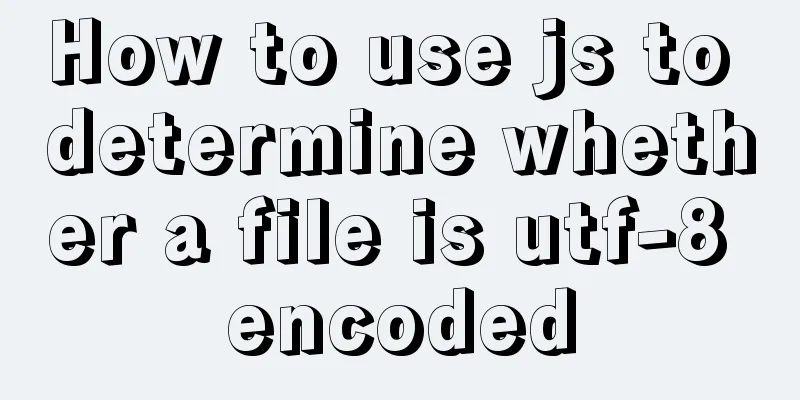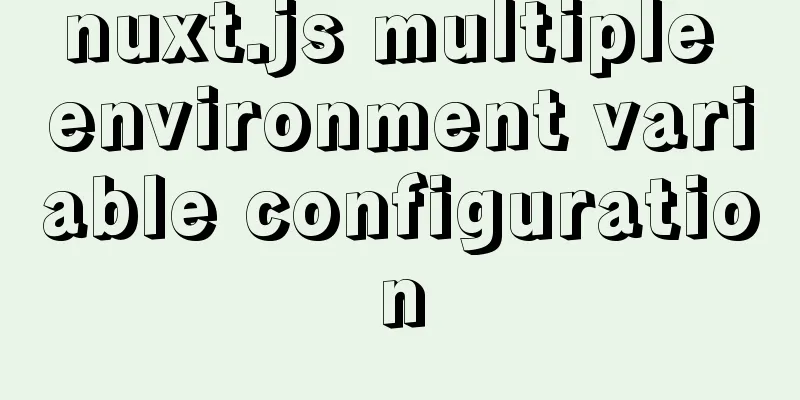Common ways to optimize Docker image size

|
The Docker images we usually build are usually large and take up a lot of disk space. With the large-scale deployment of containers, it will also waste precious bandwidth resources. This article will introduce several common methods to optimize the size of Docker images. Here we use the Redis image on the official Docker Hub for illustration. Manual management The method we can think of directly is to directly modify the official Redis image Dockerfile file, manually delete the components that are not needed after the container runs, and then rebuild a new image. This method is feasible in theory, but it is prone to errors and the effect is not particularly obvious. The main problem is that it cannot be synchronized with the official mirror in real time. Multi-stage builds Docker provides a multi-stage build feature since version 17.05 to solve this problem. This approach is achieved by discarding the intermediate layer and using the intermediate layer to provide information about how to create the final image and its contents. Only the components required for the containerized application need to be retained. The implementation at a higher level is as follows:
Distroless After relying heavily on containerization technology, especially Docker, Google has long been aware of the drawbacks of using bloated images. So they provided their own solution to this problem, namely distroless images. Unlike typical Linux base images (which bundle a lot of software), when you dockerize your application on distroless, the final image only contains the application and its runtime dependencies. Standard software included in most Linux distributions, such as package managers and even shells, will be excluded. Similarly, to use Google's distroless image, you need to use the multi-stage build we mentioned above, as follows:
FROM redis:latest AS build
ARG TIME_ZONE
RUN mkdir -p /opt/etc && \
cp -a --parents /lib/x86_64-linux-gnu/libm.so.* /opt && \
cp -a --parents /lib/x86_64-linux-gnu/libdl.so.* /opt && \
cp -a --parents /lib/x86_64-linux-gnu/libpthread.so.* /opt && \
cp -a --parents /lib/x86_64-linux-gnu/libc.so.* /opt && \
cp -a --parents /usr/local/bin/redis-server /opt && \
cp -a --parents /usr/local/bin/redis-sentinel /opt && \
cp /usr/share/zoneinfo/${TIME_ZONE:-UTC} /opt/etc/localtime
FROM gcr.io/distroless/base
COPY --from=build /opt /
VOLUME /data
WORKDIR /data
ENTRYPOINT ["redis-server"]Use redis:latest as the base image, keep some required binaries (redis-server binary and all related dependencies), and then use the distroless image as the basis for the final image to be built. Copy the contents of the opt directory to the image directory. Then we just need to rebuild the image: $ docker build -t redis:distroless .$ docker imagesREPOSITORY TAG IMAGE ID CREATED SIZEredis distroless 7d50bd873bea 15 seconds ago 28.2MBredis latest 1319b1eaa0b7 3 days ago 104MB We can see that the image size has been reduced from 104MB to 28.2MB, which greatly reduces the image size. Note: Under Linux we can use the ldd tool to find the dependencies required by a specified binary file, such as $ ldd $(which redis-server) . Using distroless images to reduce the size of Docker images is a very effective method, but this also has an obvious disadvantage: there is no shell program in the final image, which makes debugging Docker containers very difficult. Of course, this also reduces the risk of application attacks and makes it more secure. If we deploy the application to a Kubernetes cluster, we can use tools such as kubectl-debug to assist in debugging the application. Alpine Linux Another common way is to choose to build an application image based on Alpine Linux, which is a distribution that is particularly suitable for creating minimal Docker images. Apline Linux uses the smaller musl C library instead of glibc and links it statically, which means that programs compiled for musl will become relocatable binaries, eliminating the need to include shared objects, which can significantly reduce the size of the image. The redis:alpine image is about 30MB. The disadvantage is that musl usually does not perform as well as glibc. Of course, there is another advantage. Compared with the above distroless, Alpine is a mature Linux distribution that provides basic shell access, making it easier to debug Docker container applications. You can also find Alpine versions of almost all popular software on Docker Hub, such as Redis, Nginx, MySQL, etc. GNU Guix Finally, we can use GNU Guix, a versatile package management tool that has a function for creating Docker images. Guix distinguishes between a package's runtime dependencies and its build dependencies, so a Docker image built with Guix will only contain explicitly specified programs, plus their runtime dependencies, just like the distroless approach. But unlike distroless, which requires you to check the runtime dependencies of the program yourself (and of course write a Dockerfile), Guix only requires you to run one command: $ guix pack -f docker redis . The Redis image created by the command above is about 70MB in size, which is a significant reduction compared to the original image. Although it is slightly larger than the images created by the distroless and Alpine methods, using Guinx does provide some other advantages. For example, if you want your final image to include a shell for debugging like Alpine, you only need to specify it when packaging Guxi: $ guix pack -f docker redis bash . If you want to include other software, you can continue to add it later. Guix's features mean that package builds are 100% reusable, so we can add Guix support to our CI/CD pipeline and make the build process very smooth. Some people may think that Guix sounds cool, but they don’t want to download and install another tool just to build a smaller Docker image. Moreover, Guix only works under Linux. Many developers are still MacOS users, so it is troublesome to configure Guix. In fact, you don’t have to worry about this. Guix itself also has a Docker image on the Docker Hub, so it is not too complicated to use. You only need to use the simple $ docker run guix command. In addition to Guix, it's worth mentioning that there's a package management tool called Nix, and everything mentioned about Guix is equally valid and applicable to Nix. The above are the details of the common ways to optimize the size of Docker images. For more information on optimizing the size of Docker images, please pay attention to other related articles on 123WORDPRESS.COM! You may also be interested in:
|
<<: Three ways to prevent MySQL from inserting duplicate data
>>: Implement group by based on MySQL to get the latest data of each group
Recommend
Appreciation of the low-key and elegant web design in black, white and gray
Among classic color combinations, probably no one...
Add ico mirror code to html (favicon.ico is placed in the root directory)
Code: Copy code The code is as follows: <!DOCTY...
Mysql online recovery of undo table space actual combat record
1 Mysql5.6 1.1 Related parameters MySQL 5.6 adds ...
How to use linux commands to convert and splice audio formats
Install FFmpeg flac eric@ray:~$ sudo apt install ...
Super detailed MySQL8.0.22 installation and configuration tutorial
Hello everyone, today we are going to learn about...
W3C Tutorial (13): W3C WSDL Activities
Web Services are concerned with application-to-ap...
Mysql Sql statement exercises (50 questions)
Table name and fields –1. Student List Student (s...
JavaScript to show and hide the drop-down menu
This article shares the specific code for JavaScr...
Solution to the inconsistency between crontab execution time and system time
Preface In LINUX, periodic tasks are usually hand...
About MYSQL, you need to know the data types and operation tables
Data Types and Operations Data Table 1.1 MySQL ty...
Detailed explanation of CSS elastic box flex-grow, flex-shrink, flex-basis
The functions of the three attributes flex-grow, ...
A brief discussion on whether too many MySQL data queries will cause OOM
Table of contents Impact of full table scan on th...
How to use Baidu Map API in vue project
Table of contents 1. Register an account on Baidu...
It is not recommended to copy the content in Word directly to the editor on the website.
<br />Question: Why is it not recommended to...
Example method to view the IP address connected to MySQL
Specific method: First open the command prompt; T...









